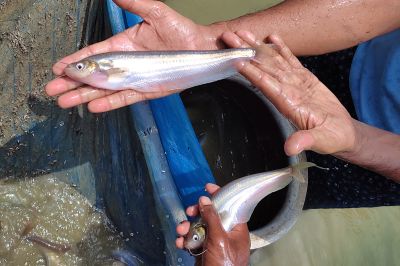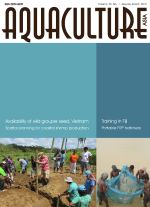Captive breeding of Ompok bimaculatus (pabda): An indigenous catfish of North East India
14 July 2024 | Kaustubh Bhagawati, Pradyut Biswas, and Bhargav Bhagawati | .pdf | 3.81 MB | Freshwater finfish, Hatchery and nursery, Inland aquaculture, India
Ompok bimaculatus, locally known as pabda catfish, is widely distributed in the natural water resources of Assam and other northeastern states of India. It is a preferred indigenous non-airbreathing catfish with high market demand compared to Indian major carps and exotic carps. Due to habitat modification and over exploitation, pabda has been assessed as Near Threatened by the International Union for Conservation of Nature.
This article describes the development of captive breeding protocols for pabda at the Pabhoi Fish Farm, including broodstock management, captive breeding, and larval rearing. Fecundity ranged from 20,000-22,000 eggs per 100 g body weight. Spawning was induced with Ovatide and eggs transferred to a flow-through system for hatching. Larvae began exogenous feeding after two days.
Publisher: Network of Aquaculture Centres in Asia-Pacific
Rights: Creative Commons Attribution.

